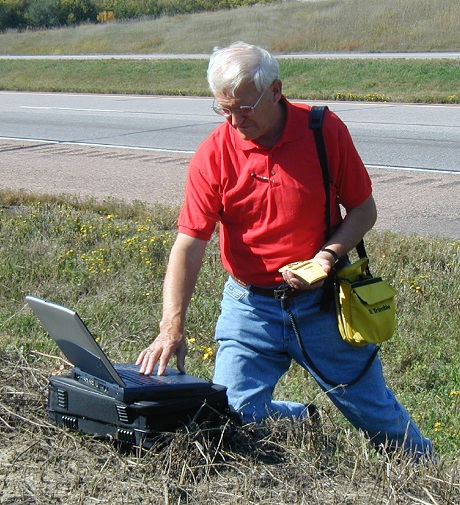
Think Nebraska is too flat to have landslides?
Think again.
While Nebraska does have its fair share of cornfields and prairies, that doesn't mean landslides within the state are a rare occurrence. In fact, landslides are more common than even native Nebraskans may realize, and that's where Duane Eversoll comes in.
"I hope people realize that landslides do occur in Nebraska," said Eversoll, professor emeritus. "Most people perceive us as a flat state – we are not."
Eversoll has more than 315 Nebraska landslides in his database.
"And I'm still counting," he said.
"Nebraska Landslides" is the first book of its kind and is the product of more than three decades of research, which initially began in 1981. In 1987, Eversoll received a grant from the Nebraska Department of Roads that culminated in a 41-page report, "Landslide Inventory Along Nebraska State-Federal Roadway System."
Upon completion of that report, Eversoll continued doing part-time research on Nebraska landslides from 2006 to the present day. All of the data has been curated for the book, which Eversoll said he wants people to use as a resource.
"This is important to me," Eversoll said. "I hope people will get an idea that this is something they need to be aware of."
Eversoll conducted virtually all of the book's research himself and drove across Nebraska to see the many landslides featured in the book in person.
"I spent an enormous amount of time in the field, driving to and documenting each landslide," Eversoll said. "When GPS came along, it made (the process) a lot easier."
Although landslides have occurred throughout Nebraska, they are more common in the eastern and northeastern parts of the state.
"There's a reason for that," Eversoll said.
The three elements needed for a landslide to occur are geological formations susceptible to landslides, a slope and precipitation.
"Nebraska had glaciers go through about two million years ago (that) covered the eastern part of the state," he said. "That material in there is susceptible to landslides."
Loess, a sediment formed by the accumulation of wind-blown dust, is deposited above most of that glacial till. Loess also happens to be porous – so when it rains, the perfect landslide cocktail is created.
"As the rain falls, it goes pretty fast though this material and it hits the clays in this glacial deposit," Eversoll said.
The book features a susceptibility map that illustrates where landslides most frequently occur. Although there have been no reported deaths directly related to landslides in Nebraska, Eversoll said that four people died when they tried to fix the damage that had resulted from a landslide.
"They had dug a trench and the trench gave way, killing four of them," he said. "We need to get this out and make people aware that we do have landslides in the state, and then educate them about where they should not be building."
"Nebraska Landslides" is $12 and available for purchase from the Nebraska Maps and More Store on the first floor of Hardin Hall at 33rd and Holdrege streets. The book can also be purchased online at go.unl.edu/landslides and amazon.com. To place an order over the phone, call 472-3471.
— Mekita Rivas, Natural Resources